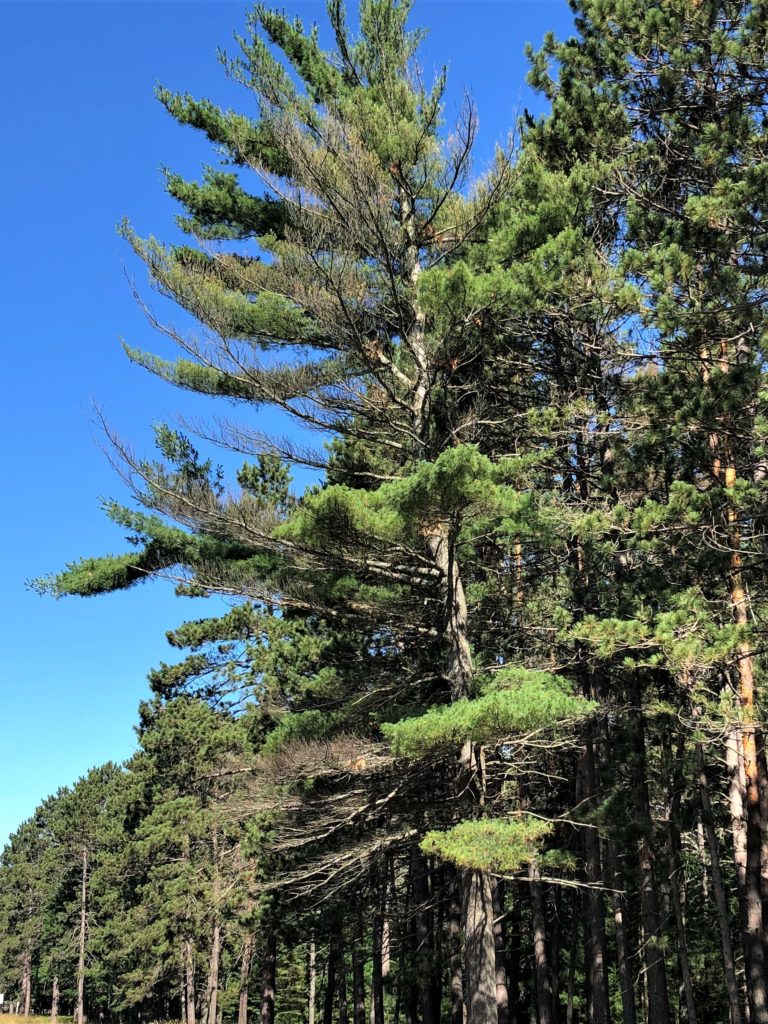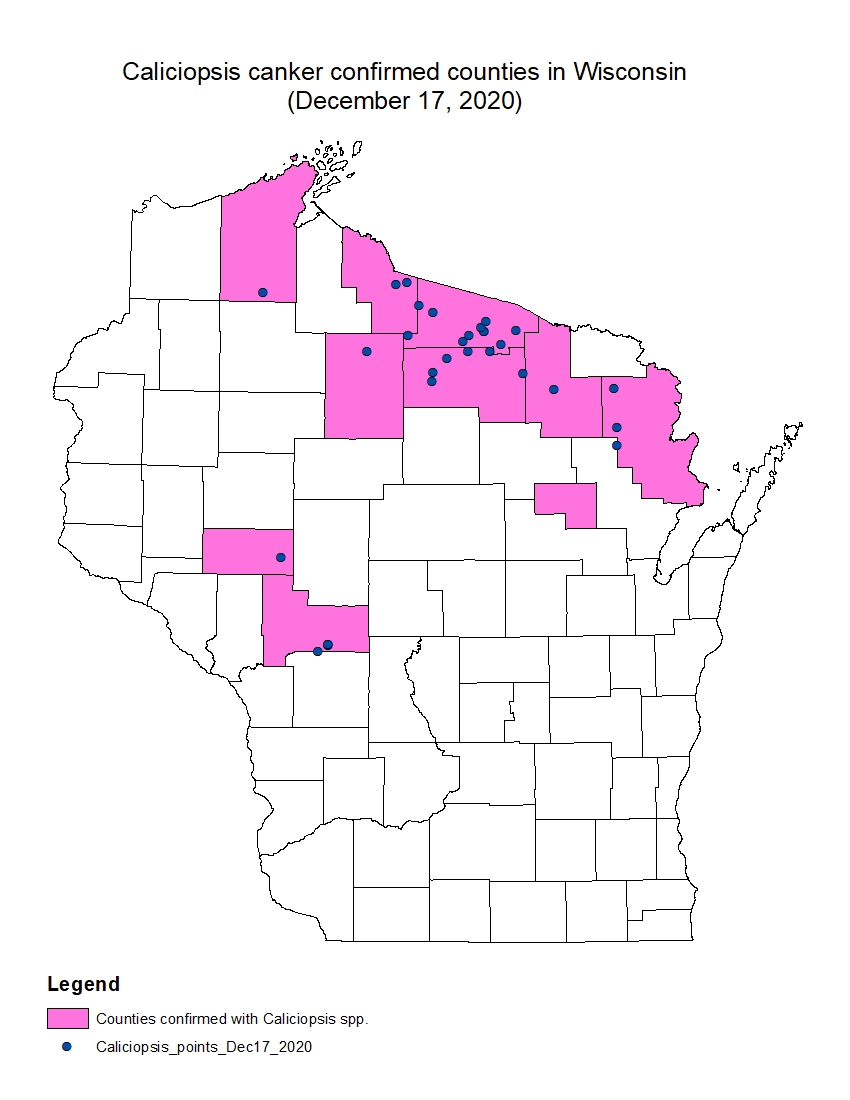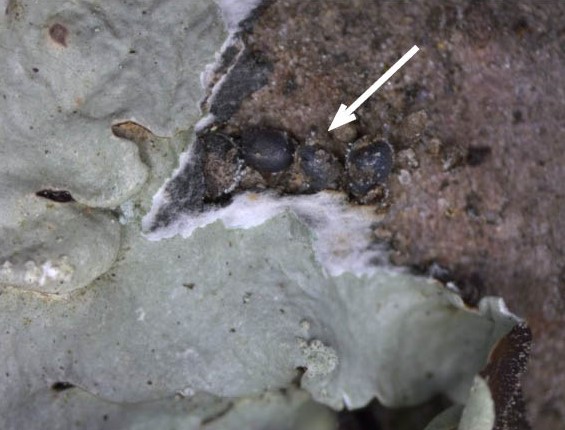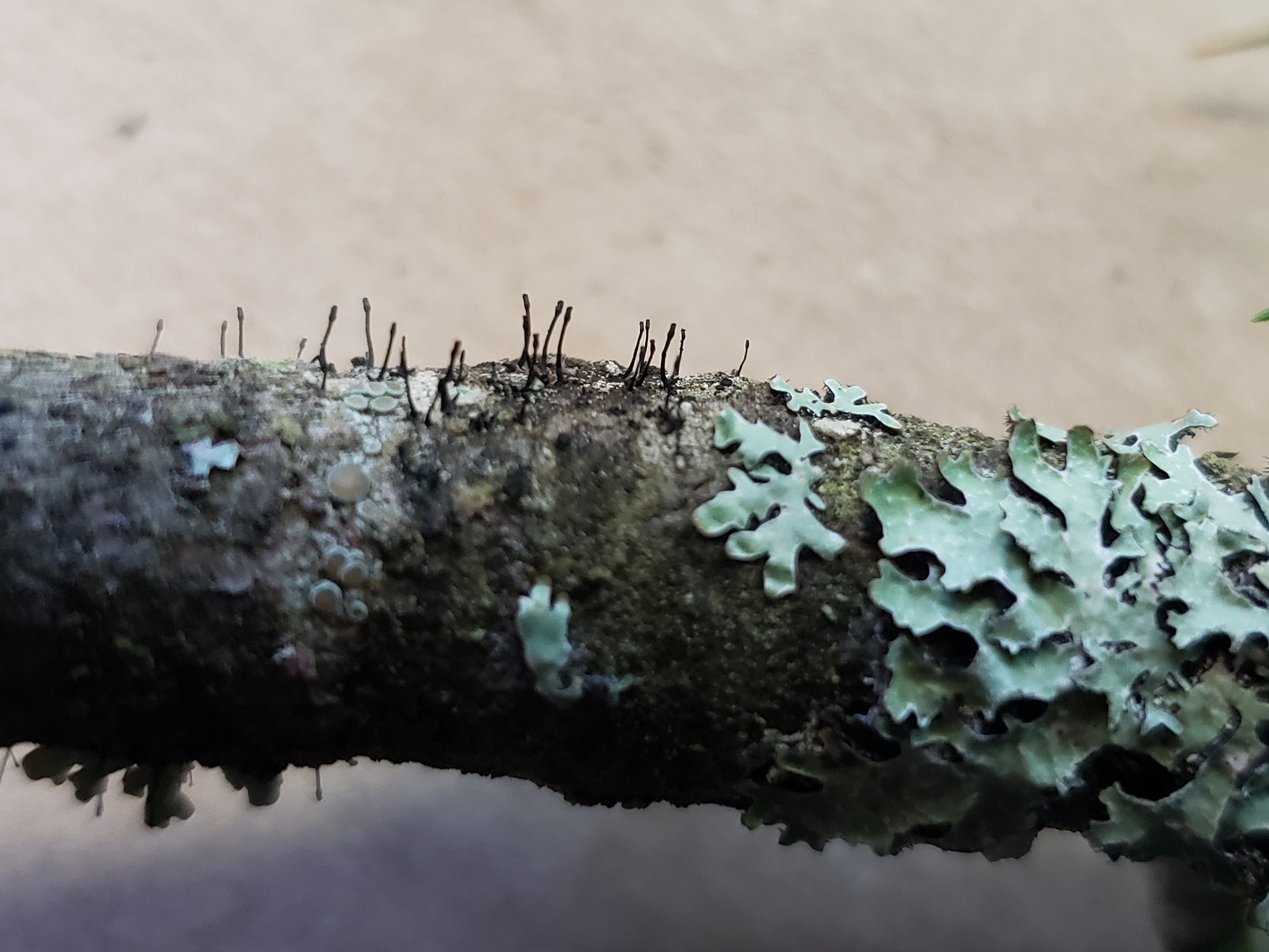By Elly Voigt, DNR Forest Health Communications Specialist and Linda Williams, DNR Forest Health Specialist, Linda.Williams@wisconsin.gov, 920-360-0665
The association between a tiny insect and an inconspicuous fungus is causing branch and sapling mortality. White pine bast scale (WPBS; Matsucoccus macrocicatrices) and Caliciopsis canker (caused by Caliciopsis spp.) are agents in an insect/disease complex impacting white pines (Figure 1).

Figure 1. Branch mortality caused by WPBS and Caliciopsis canker.
WPBS seems to cause minimal damage by itself. However, trees weakened and stressed by WPBS appear to be more susceptible to infection by Caliciopsis spp., which may infect trees through the tiny feeding wounds left by WPBS.
The causal fungus of Caliciopsis canker is considered native to North America. In Wisconsin, it has been identified in multiple northern counties (Bayfield, Iron, Price, Vilas, Oneida, Forest, Marinette, and Menominee) and two west central counties (Jackson and Eau Claire) (Figure 2). It is likely that the fungus is present in other Wisconsin counties as well.

Figure 2. Confirmed locations of Caliciopsis canker in Wisconsin.
To look for this insect/disease complex, first look for tree symptoms, including flagging (dead, brown twig tips) and branch mortality (which usually begins on lower branches but may occur mid-crown as well). There may also be resin oozing from the trunk or branches. Symptoms of this complex can be mistaken for the symptoms of white pine blister rust (Cronartium ribicola).
On symptomatic trees, look more closely at the trunk and any branches or twigs within reach for signs of WPBS and Caliciopsis canker. These signs should be visible to the naked eye, but a hand lens may help. White pine bast scales are tiny, black, oval-shaped and lack both eyes and legs (Figure 3). They use a long stylet to siphon sap from outer layers of the tree’s phloem (bast). WPBS is often found under lichen or in cracks in the bark and can also be found on twig tips, at the base of needle clusters or tucked into bud scales.

Figure 3. Three white pine bast scales (in center of photo) are exposed after removing the leafy lichen that was protecting them.
Caliciopsis canker can be confirmed by the presence of its fruiting structures, which are found year-round. These very small, eyelash-like structures can be found on twigs, branches or trunks and cankers (dead spots in the tree’s tissue) occur underneath them (Figures 4 and 5). Many cankers can develop. As a branch becomes more severely impacted, it will eventually lose the ability to move water to its needles, resulting in needle death and branch mortality.

Figure 4. Look closely at resinous spots on the trunk and branches for signs of Caliciopsis canker.
Currently, there are no management recommendations for this complex. Look for further information in Forest Health News as it develops.
The DNR keeps a record of confirmed Caliciopsis canker locations throughout the state. If you suspect Caliciopsis canker and WPBS in your stand, please contact your regional Forest Health Specialist for more information and confirmation.

Figure 5. The eyelash-like fruiting structures of Caliciopsis canker can be seen year-round.
